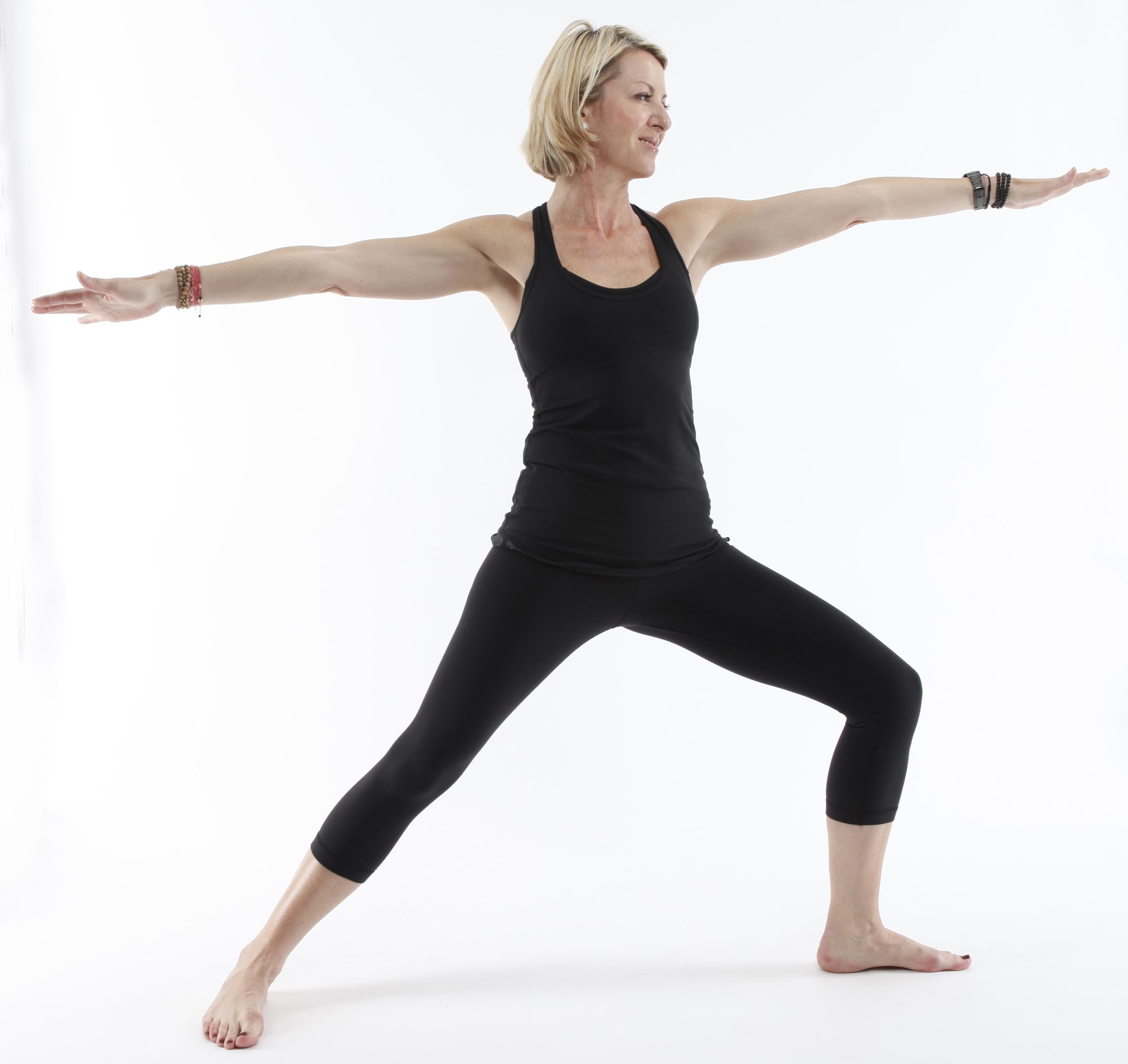Yin yang yoga incorporates the slow pace of yin yoga with the traditional practice of yang yoga. It blends two yoga styles, promoting passive and dynamic poses for a physical and spiritual balance.
This type of yoga originated from the slower Yin yoga practice, where you passively hold poses for longer timeframes. You’ll maintain the poses longer, focusing energies on the deep connective tissues and joints.
It also involves the active practice of Yang Yoga, working your muscles and stimulating blood flow. The Yang style boosts stamina, strength, and flexibility.
Yin yang yoga is a unique and powerful practice that offers many benefits for the body and the mind. The balanced yoga practice involves different elements that promote restoration. It improves all aspects of your body, allowing for a full-body yoga session.
The Yin and Yang Elements of Yin Yang Yoga
Yin yoga brings balance to organs through energy channels. It helps you balance elements to promote mind-body balance and harmony. Yang yoga encourages physical activity, reduces stress, and improves heart health.
Studies show that yin and yang relate to the following elements:
- wood
- fire
- earth
- metal
- water
Combining yin and yang for yoga is complementary as the elements come together. It balances your physical and mental health, improving your overall well-being.
Benefits of Yin Yang Yoga
Yin yoga can help relieve stress and anxiety, calm your mind and body, and improve focus and concentration. This type of holistic wellness promotes a mind-body connection that allows for balance.
Yang yoga increases strength and tones your body. It helps boost circulation and flexibility while increasing overall stamina.
During yang yoga, you must synchronize your movements with your breathing, helping you calm your mind. It also eases tension, allowing air to flow throughout your body.
Yin Yang Yoga Poses
Yin yoga is more meditative and involves moving less, relaxing into the poses, and stretching. Yang yoga is better for strength-building as it involves more movement while targeting your muscles.
Yin yang yoga begins with the more active yang poses. You’ll then transition to the passive yin poses that help slow your body. You can incorporate yin yang poses into a yoga practice by finding ones that work for you, including the following:
Examples of 3 Yin poses
Heart-melting Pose
This pose opens your chest, mid, and upper back. It relieves tension in your shoulders and back while opening up your heart chakra. Here’s how to do it:
- Start on your hands and knees in a tabletop position with the tops of your feet resting on the ground.
- With your knees hip-width apart, walk your hands forward while sinking your chest to the floor.
- Place your chin or forehead on the floor, depending on what’s easier for you.
- Draw your navel toward your spine and firmly press your palms into the ground.
- When finished, lift your chest and walk your hands back until you’re in the starting position.
Butterfly Pose
This pose improves flexibility and reduces body tension. If you sit often or perform high-intensity workouts, it can help with tight hips or pelvic pain. It also targets the lower back and thigh muscles, reduces pain, promotes flexibility, and improves your range of motion.
The butterfly pose also encourages calm and a sense of inner awareness. To do this pose, follow these steps:
- Start in a seated position, and bend your knees while bringing the soles of your feet together.
- Place your fingers around the side of your feet on the pinkie-toe side. You can put your hands on your shins or ankles instead if it’s easier.
- Sit up straight, lengthening your spine and broadening your chest.
- Pull your shoulders back and down.
- Hold the position for five minutes before extending your legs to release the pose.
You can make this pose easier by sitting on the edge of a cushion or folded blanket. Another idea is to sit against a wall so it’s easier to keep your spine straight.
Sleeping Swan Pose
This pose is a backbend that opens your hips in a relaxing way while also targeting your quads. It increases mobility and strength while stimulating meridians. Here’s how to do it:
- Start on your hands and knees.
- Pull your right leg out in front, with your right knee behind your wrist and your right ankle in front of your left hip.
- Keep your weight on your hips with minimal pressure on your knee.
- Slide your other leg back until it’s flat on the floor.
- Slowly lower your chest toward the floor, holding the pose until you’re ready to return to the starting position.
- Repeat these steps on the left side.
Examples of 3 Yang poses
Goddess Pose
Start in the center of your mat, and step both feet out to your sides until they are wider than your shoulders. Turn your heels so your toes point outward, then bend your knees until they’re above your toes. Bring your palms together in front of you, and take several deep breaths.
Sun Salutation
The sun salutation is part of a sequence, and here’s how to do it:
- Begin in a mountain pose, standing with your palms together near your heart. Inhale as you bring your arms to the side and toward the ceiling, bringing your palms together above your head. Look up and let your shoulders naturally move upward.
- The next part of the sequence is Uttanasana to flat back pose. Exhale while releasing your arms to the floor in front of you. Once you’re in a forward bend position, inhale as you lift your head and straighten your back.
- The third step is a plank pose. Your shoulders should be over your wrist and body in a straight line.
- Next is the knees, chest, and chin pose, where you lower each body part to the floor. Lower your knees first, then your chest and chin. Keep your butt high during this pose and your elbows close to your ribs.
- The cobra pose is next, a back band that requires anchoring your pelvis and tops of the feet to the floor. You’ll place your hands flat on the floor beneath your shoulders and raise your chest while looking straight ahead.
- Next is the downward-facing dog pose that requires walking your hands forward on the floor and your feet backward. You’ll keep your bottom high, your toes forward, and your spine straight.
- Finally, you’ll exhale as you jump into a forward bend pose. With your hands already on the mat, you’ll jump forward so your feet meet your hands. Then, inhale as you raise your head and draw your shoulders back to flatten your back.
- Finish the sun salutation by returning to the mountain pose.

Warrior Series
The warrior series involves a sequence of standing yoga poses. You’ll start in the mountain pose before beginning the series. Here’s how you do it:
- Warrior I: Step back with your left foot as far as possible, and bring your heel to the floor. Turn your toes about 45 degrees, bend the right knee, and ensure it stays above your ankle. Inhale as you bring your arms above your head, opening the heart and looking up at your fingertips. Hold the pose for 10 seconds.
- Humble Warrior Pose: Start back in the mountain pose before walking your left foot back as far as possible. Bend your right knee, keeping your thigh perpendicular to the floor. Bring your arms behind your back and interlace your fingers at the bottom of your back before puffing out your chest. Then, bend forward, bringing the crown of your head toward the floor and pulling your arms straight toward the sky.
- Warrior II: Walk your right leg forward and your left backward, opening your hips. Bring your right arm forward, straight in front of you, and your left one straight out behind you. Bend your right knee deeply over the right ankle while engaging your quads and sinking your hips low.
- Reverse Warrior: You’ll walk your right leg forward and left backward, just like with the Warrior II step. However, you’ll raise your right arm overhead while sliding your left arm down the back of your left leg.
- Warrior III: Lift your left leg straight behind you as you lean your upper body forward, keeping both parallel to the floor. You can also put your arms above your head, aligned with your torso.

Preparing for Yin Yang Yoga
Yin yang yoga is perfect for beginners because you can use variations that work best for you. It’s a gentle practice, including both active and slower movements.
It’s best to check with your healthcare provider before implementing a new exercise, but once they clear you, it’s time to prepare your mind and body for Yin Yang Yoga.
Some tips for beginners include:
- learning deep breathing exercises to help you relax
- setting intentions
- wearing comfortable clothing
- use yoga props for safety and comfort
- entering each yoga pose slowly to avoid pain or discomfort
Yin Yang Yoga and Traditional Chinese Medicine
Traditional Chinese Medicine involves the idea that humans are connected to the world and must find equilibrium. Chinese Medicine indicates that a balance of yin and yang is essential to your health and well-being.
Yang indicates more dynamic and activity. These opposite forces combine to balance one another and promote health and well-being. As energy channels balance, it helps clear blockages to improve the energy flow of Qi along the meridians.
Yin yang yoga and acupuncture both improve flow and clear energy blockages. Acupuncture points are along the meridians, so clearing them with yin yang yoga can offer the same benefits.
Final Thoughts on Yin Yang Yoga
Using yin yang yoga in your routine can help you relax your mind and body while strengthening your muscles. It offers many physical and mental benefits that help you achieve your goals.
You’ll achieve optimal health and clear thinking with balance and harmony from holistic wellness. Remember to slow down, focus on your breathing, and be open to embracing balance.




















